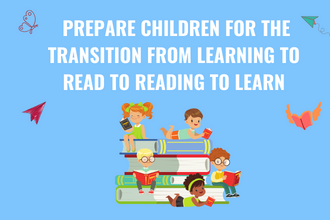How Do Early Literacy Programs Prepare Children for the Transition From Learning to Read to Reading to Learn?
Early literacy programs play a crucial role in preparing children for the transition from learning to read to reading to learn. This transition is significant because it marks the shift from acquiring basic reading skills to using those skills for more complex and content-driven learning.
Here are ways in which early literacy programs facilitate this transition:
1. Phonemic Awareness and Phonics
Early literacy programs often focus on developing phonemic awareness and phonics skills. These foundational skills help children decode words and build a strong understanding of the relationship between letters and sounds, laying the groundwork for reading fluency.
2. Vocabulary Development
Effective early literacy programs emphasize vocabulary development. A rich and diverse vocabulary is essential for comprehension and enables children to understand more complex texts as they transition to reading for learning.
3. Fluency Building
Early literacy programs work on building reading fluency. Fluent readers can read with accuracy, expression, and at an appropriate pace. Fluent reading is crucial for comprehending texts efficiently and for transitioning from basic reading to reading for learning.
4. Critical Thinking Skills
Early literacy programs foster critical thinking skills. Children are encouraged to analyze and evaluate information from texts, make inferences, and draw conclusions. These skills are vital for engaging with more complex content in various subjects.
5. Independent Reading Practices
Encouraging independent reading is a key component of early literacy programs. When children develop a habit of reading for pleasure and information, they are more likely to approach reading as a tool for learning in different subjects.
6. Writing Skills Development
Writing is closely connected to reading. Early literacy programs often include activities that promote writing skills. As children learn to express themselves through writing, they enhance their understanding of language and improve their ability to engage with written material.
7. Scaffolding and Differentiation
Early literacy programs use scaffolding and differentiation strategies to support learners at various levels. This ensures that each child can progress at their own pace and receive the necessary support for a successful transition to reading to learn.
8. Collaboration with Families
Effective early literacy programs involve families in the learning process. Providing resources and strategies for parents to support literacy at home enhances children's overall literacy development and readiness for reading to learn.
By addressing these components in early literacy programs, educators help children develop the necessary skills and attitudes to confidently transition from basic reading skills to using reading as a tool for acquiring new knowledge and engaging with academic content across various subjects.
To learn more about early literacy programs, check out our blog page: https://www.lernerknowsliteracy.com/blog
If you are interested in customizing take-home packs to best benefit the needs of your students, contact a literacy specialist today.

